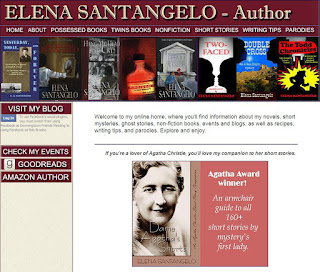Inflation has a way of affecting everything eventually. Prices have gone up on many things you buy today. The same can be said for those writers who continue to challenge their readers by using words their readers don’t know instead of simple, everyday words to express themselves.
As little as 10 years ago, those big words were only worth $20, but the price has gone up. With the the advent of social media networks like Facebook and Twitter, more and more people are turning to plainer words to express themselves. Part of this is the use of their thumbs to peck out the words of their posts on their smartphones.
It doesn’t matter how extensive a vocabulary you have. What matters is that you clearly express what you’re trying to say to your readers. Unfortunately, that’s what wasn’t encouraged in school, and especially not in college. Academics pride themselves in sounding learned. But to be a good writer, it’s not necessary to show readers how intelligent or learned you are. It’s more important to take complex concepts and write about them clearly so all your readers will understand.
By using complex words, readers miss the nuances and only get a basic understanding of the subject matter.
 A good example is a travel book entitled Mirrors of the Unseen by Jason Elliot that tells about his journeys through Iran. The majority of readers haven’t been to Iran, so they probably only know about it through the T.V. news. He writes beautifully about the culture, with its mosques and bazaars. Unfortunately, all this beauty comes at a price. It seems Elliot, like so many writers, assumes all readers have his extensive vocabulary.
A good example is a travel book entitled Mirrors of the Unseen by Jason Elliot that tells about his journeys through Iran. The majority of readers haven’t been to Iran, so they probably only know about it through the T.V. news. He writes beautifully about the culture, with its mosques and bazaars. Unfortunately, all this beauty comes at a price. It seems Elliot, like so many writers, assumes all readers have his extensive vocabulary. In contrast is a book entitled Antarctica by Gabrielle Walker that’s filled with descriptions of complicated scientific experiments and research written against the background of the stark beauty of the world’s southernmost frozen continent. This writer, on the other hand, uses plain language and makes it seem as if her readers were traveling around with her. She presents an in-depth view of Antarctica that draws her readers in and keeps them turning the pages.
Go back and look at books you’ve read. You’ll notice that the ones you enjoyed the most probably had the most conversational language. Re-read portions of the books you liked the most and see if you can discover the essence of the author’s writing style.
Back in the early days of personal computers, there was a simple software program called PC Style. This little program would analyze a piece of writing for its use of personal pronouns, word length, dynamic verbs, concrete nouns, sentence length, etc. By running several paragraphs of a book through it, you could immediately analyze the writing style. Then by doing the same to a piece of your own writing, you could immediately see where it was lacking. Unfortunately, that program hasn’t been available for a long time. And while some of today’s word processing programs try to do the same, they just don’t compare to it.
 You can use the Find and Replace feature in your word processing program to search for personal pronouns—I, you, we, they, he, and she—for example. These are the words that make writing conversational. These are the words that make readers feel as if they’re part of the story.
You can use the Find and Replace feature in your word processing program to search for personal pronouns—I, you, we, they, he, and she—for example. These are the words that make writing conversational. These are the words that make readers feel as if they’re part of the story. You can also do a manual search for complex words—but don’t do this immediately after finishing a piece. Wait a day or two so your writing will appear fresh to your mind. When you find words that you are either long or complex, put them in bold type so you can easily find them and then use the thesaurus in your word processing program to find plainer words that mean the same thing. Do the same for long sentences. Try to keep your sentences shorter and avoid using semi-colons which tend to string them out.
Once you see the difference all this makes to your writing, you’ll never want to go back to using those pesky $25 words. Instead, you’ll get used to using $1, $5, and $10 words to enlighten your readers about your subject. This blog is a good example.
To read more of my articles and book excerpts, please visit my Web site. And to read more articles on freelance writing, grammar, and marketing, go to Writer's Corner.










